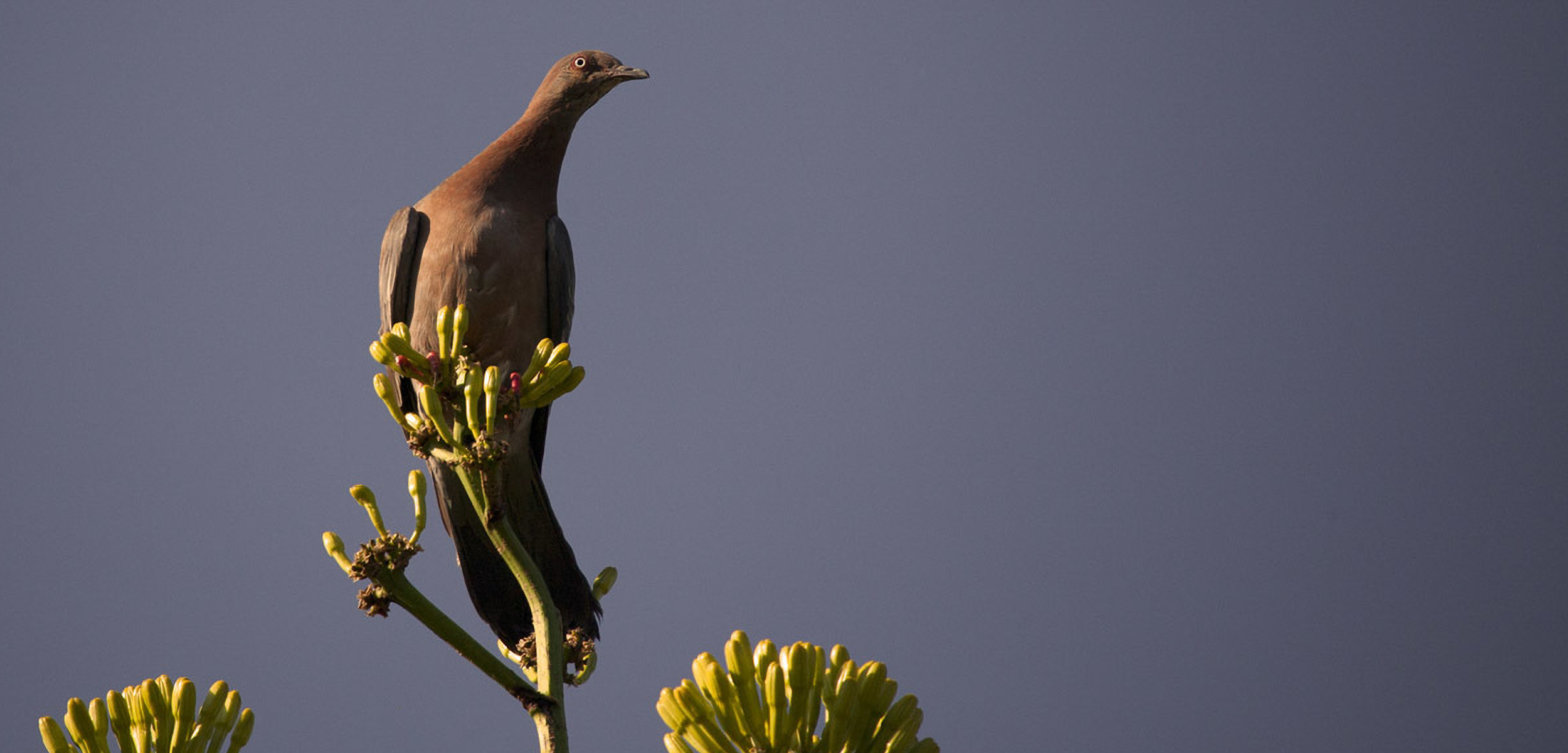The Puerto Rican Plain Pigeon Can’t Take Another Big Hurricane
Hampered by habitat loss and besieged by climate change–boosted hurricanes, this Caribbean species may not survive the next big storm.
Article body copy
(This story went to press before Hurricane Fiona hit Puerto Rico as a Category 1 hurricane on September 19, 2022.)
Hurricane Maria devastated Puerto Rico. Thousands of people died because of the 2017 storm—the most destructive in Puerto Rico’s recent history and the third costliest in US history after Hurricanes Katrina and Harvey. Hurricane Maria also left at least one species, the Puerto Rican plain pigeon, teetering on the brink of extinction. Now, Frank Rivera-Milán, an ecologist at the US Fish and Wildlife Service, is warning that if another Maria-sized storm hits the island within the decade, the plain pigeon will be gone for good.
Rivera-Milán has been monitoring the endangered Puerto Rican plain pigeon since 1986. In that time, three major hurricanes have hit the island. The Category 4 Hurricane Hugo in 1989 caused plain pigeon numbers to fall, but they returned to pre-hurricane levels within two years. The birds sailed largely unscathed through Hurricane Georges, a Category 3 storm in 1998, but Maria was different.
Before Maria hit, Rivera-Milán’s monitoring estimated there were around 12,000 plain pigeons across Puerto Rico. The year after the storm, surveys suggested the population was down to only 750. In the island’s east-central region, where the pigeon has historically been the most abundant, population densities dropped from around four per square kilometer to just 0.5. Numbers have remained low ever since, leaving the bird in a precarious position.
Hurricanes are part of life in the Caribbean. On average, seven storms, including three major hurricanes, hit the region each year. Usually, life bounces back, but climate change is making hurricanes more powerful. The Puerto Rican plain pigeon is not the only species that is suffering.
Recent research on Sint Eustatius, an island in the northeastern Caribbean, highlights how the intense 2017 hurricane season dramatically reduced populations of a critically endangered iguana. Similarly, a two-decade-long study into west Indian woodpeckers in The Bahamas concludes that although the birds are resilient to hurricanes, increasingly intense storms may test their ability to survive.
Michael Akresh, an ecologist at New Hampshire’s Antioch University New England who led the woodpecker study, says that as well as stronger hurricanes, other threats such as hunting and introduced predators combine to make populations much more vulnerable.
Joseph Wunderle, a wildlife biologist at the International Institute of Tropical Forestry in Puerto Rico, agrees, adding that there’s also been a lot of habitat loss. The resulting patchy habitats and small, dispersed populations are more at risk from disturbances like hurricanes.
Because powerful storms that flatten trees destroy their food, fruit and seed eaters, like the plain pigeon, and nectarivores are the most vulnerable bird species to hurricanes. (Maria killed twice as many trees as Hugo and Georges.) By contrast, Wunderle says, “birds that feed primarily on insects and maybe small frogs and lizards seem to come through [hurricanes] fairly well.”
Plain pigeons are also susceptible because they only lay one egg at a time. Most pigeons and doves lay two, Wunderle says, while other birds lay even more. This makes recovery harder for the plain pigeon because “you’re not cranking out as many babies,” he says.
If the plain pigeon does get wiped out by a hurricane, it won’t be the first in recent history. According to Akresh, that’s likely what happened to the Bahama nuthatch. The bird was found only on Grand Bahama before the Category 5 Hurricane Dorian hit in 2019, destroying the pine forests where it lived.
“No one has seen the Bahama nuthatch in the last two or three years … so that bird may have gone extinct,” Akresh says.
Wunderle believes habitat restoration is key to assisting Caribbean birds. The prime target for restoration efforts, he says, should be rebuilding lowland forest ecosystems that have been lost to agriculture, as these habitats recover much more quickly from hurricanes than higher-altitude forests. Another conservation effort could be to encourage the growth of trees that are more resilient in the face of storms, such as palms. Akresh adds that conservation strategies such as captive breeding and predator removal would also help imperiled species like the plain pigeon.

